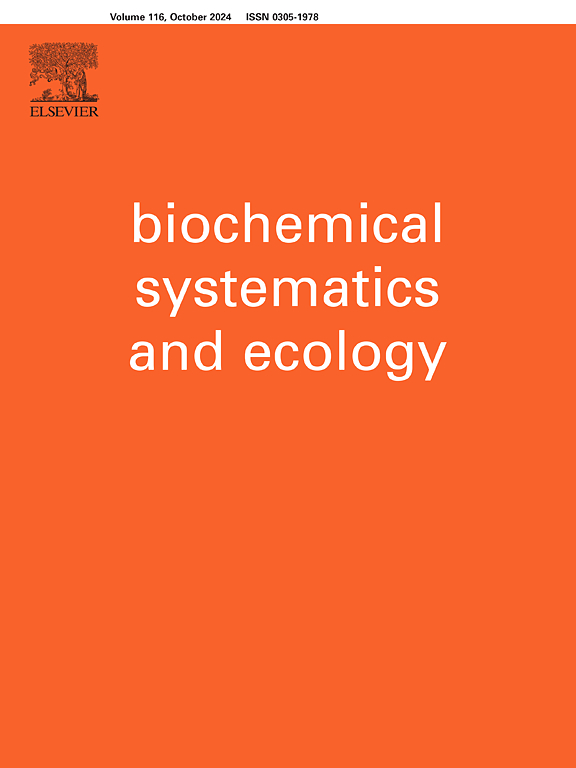Two new cycloartane glycosides from the aerial parts of Thalictrum simplex subsp. amurense
IF 2
4区 生物学
Q4 BIOCHEMISTRY & MOLECULAR BIOLOGY
引用次数: 0
Abstract
Two new cycloartane glycosides (1 and 2) and ten known compounds, including cycloartane glycosides (3–4), flavonoid glycosides (5–7), anthraquinones (8–10), and phenylethanols (11–12), were isolated from the aerial parts of Thalictrum simplex subsp. amurense (Maxim.) Hand. Their structures were elucidated using comprehensive spectroscopic techniques, including HR-ESI-MS and 2D NMR. Notably, all isolated compounds were reported for the first time from T. simplex subsp. amurense, with compounds 9 and 10 being the first to be found in the family Ranunculaceae. Furthermore, the chemotaxonomic significance of these secondary metabolites is discussed.

两个新的环artane苷从Thalictrum simplex亚种的地上部分。amurense
从单形Thalictrum simplex亚种的地上部分分离得到两个新的环ar烷苷(1和2)和十个已知化合物,包括环ar烷苷(3-4)、类黄酮苷(5-7)、蒽醌(8-10)和苯乙醇(11-12)。amurense(格言)。的手。利用HR-ESI-MS和2D NMR等综合光谱技术对其结构进行了鉴定。值得注意的是,所有分离到的化合物均为首次报道。化合物9和10是首次在毛茛科中发现的。此外,还讨论了这些次生代谢物的化学分类意义。
本文章由计算机程序翻译,如有差异,请以英文原文为准。
求助全文
约1分钟内获得全文
求助全文
来源期刊

Biochemical Systematics and Ecology
生物-进化生物学
CiteScore
3.00
自引率
12.50%
发文量
147
审稿时长
43 days
期刊介绍:
Biochemical Systematics and Ecology is devoted to the publication of original papers and reviews, both submitted and invited, in two subject areas: I) the application of biochemistry to problems relating to systematic biology of organisms (biochemical systematics); II) the role of biochemistry in interactions between organisms or between an organism and its environment (biochemical ecology).
In the Biochemical Systematics subject area, comparative studies of the distribution of (secondary) metabolites within a wider taxon (e.g. genus or family) are welcome. Comparative studies, encompassing multiple accessions of each of the taxa within their distribution are particularly encouraged. Welcome are also studies combining classical chemosystematic studies (such as comparative HPLC-MS or GC-MS investigations) with (macro-) molecular phylogenetic studies. Studies that involve the comparative use of compounds to help differentiate among species such as adulterants or substitutes that illustrate the applied use of chemosystematics are welcome. In contrast, studies solely employing macromolecular phylogenetic techniques (gene sequences, RAPD studies etc.) will be considered out of scope. Discouraged are manuscripts that report known or new compounds from a single source taxon without addressing a systematic hypothesis. Also considered out of scope are studies using outdated and hard to reproduce macromolecular techniques such as RAPDs in combination with standard chemosystematic techniques such as GC-FID and GC-MS.
 求助内容:
求助内容: 应助结果提醒方式:
应助结果提醒方式:


